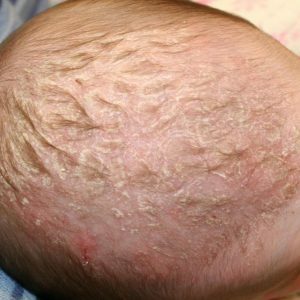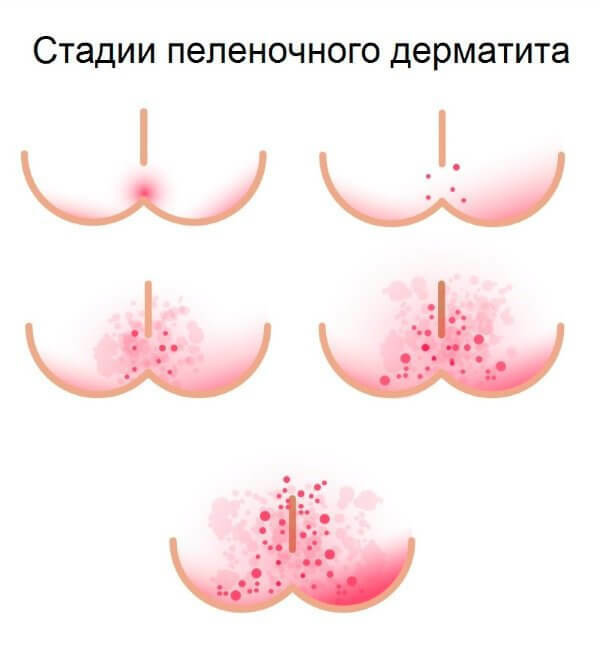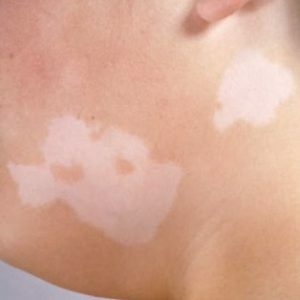Recruitinghausen's Neurofibromatosis: Symptoms, Diagnosis and Treatment
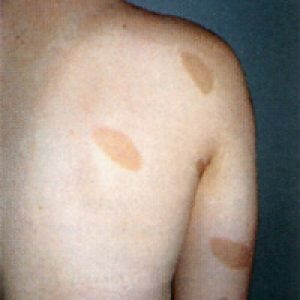
Neurofibromatosis Recklinghausen is a hereditary disease that is transmitted by an autosomal dominant principle.This disease is characterized by the formation of benign tumors of the nervous tissue, which serve as a provocative factor of bone and skin changes of various types.As the disease progresses, all organs are involved in the pathological process.
The first symptom of Recklinghausen's neurofibromatosis is large pigment spots( more than one and a half centimeters in diameter) that appear on the skin.This disease occurs with the same frequency in men and women, for the first time pathology is diagnosed in childhood( period 3-16 years).
This hereditary disease is characterized by progressive course, unstable symptoms, defeat of many internal organs, frequent complications( some of them can lead to death of the patient).Against the background of progressive neurofibromatosis Recklinghausen has a high risk of malignant neoplasm.
Table of contents: Causes of occurrence Classification of neurofibromatosis Recklinghausen Symptoms of Recklinghausen's disease Diagnostic measures Treatment of Recklinghausen's diseaseCauses of
Neurofibromatosis Recklinghausen appears as a result of mutation of the NF-1 gene in the seventeenth q-chromosome.There is an assumption that this gene is actively involved in the synthesis of the protein neurofibromin, which is able to suppress the growth of tumor formations.Just the lack of this protein, or its complete absence, leads to the degeneration of cells of the nervous tissue in the tumor.
The disease is inherited autosomal dominant, in parents with this pathology the probability of producing a sick baby is 50%.In some cases, Recklinghausen's neurofibromatosis develops with a spontaneous mutation that occurs in the genetic material of parents who have never had such a disease even in the genus.
Classification of Recombinghausen's neurofibromatosis
Neoplasms in this disease can develop from the tissues of the central or peripheral nervous system. Depending on this in medicine, the following forms of pathology are distinguished:
- peripheral form( Recklinghausen type 1 disease) - neoplasms develop exclusively from peripheral nervous system tissues;
- central form( Recklinghausen's disease type 2) - tumors grow from the tissues of the central nervous system.
The peripheral form of Recklinghausen's neurofibromatosis is most often diagnosed - according to statistics with this kind of pathology, one child is born for 4,000 newborns. There is one more classification of the disease: - 3 type( mixed) - is characterized by rapidly growing neoplasms of the central nervous system, which appear in 20-30 years, and the presence of neurofibre on the palms of the patient;
- 4 type - from the central form differs only by a large number of neurofibres on the body of the patient;
- 5 type( segmental) - one-sided lesion in the form of hyperpigmentation and neurofibroma, this lesion affects only one cutaneous segment;
- 6 type - there are only pigmented spots, there are no neurofibromas completely;
- 7 type - symptoms of the disease manifest late, neurofibromas develop in the age of over 20 years.
Symptoms of Recklinghausen's disease
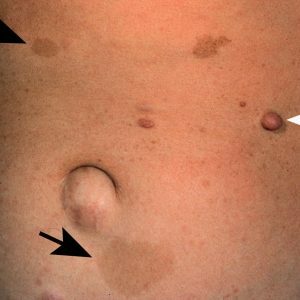 The first symptoms of the hereditary disease in question are detected in a newborn baby - the skin is determined by multiple pigment spots of small size and oval shape.In most cases, they have a tan color, but in some cases blue, violet or depigmented spots may be present.
The first symptoms of the hereditary disease in question are detected in a newborn baby - the skin is determined by multiple pigment spots of small size and oval shape.In most cases, they have a tan color, but in some cases blue, violet or depigmented spots may be present.
Hyperpigmentation is more often formed in the armpits, inguinal folds and on the trunk.Much less often, such spots are found on the neck, upper or lower extremities, face.It is characteristic that with age, the number of such pronounced pigment spots increases, their dimensions also grow.
Progression of the disease leads to the appearance of subcutaneous and cutaneous neurofibres, which are protrusions of a hernial-like type up to several centimeters in size.Most often, such formations appear at the age of 20 years and older, the color of the skin over them either remains unchanged, or becomes brown, pinkish-blue.Most often, such tumors form on the surface of the trunk, palpation is determined by their soft consistency( in rare cases, it can be dense), and when you try to press the tumor with your finger, it "falls" into the void.
In some cases, at the top of the neurofibroma, there is hair growth, and in this case the tumor will be called plexiform fibroids.Such formations have a massive sack-like appearance, they are probed by sinuous nerve trunks.Plexiform fibroids can be located on the surface of the skin or paraspinally, in the mediastinum and in the retroperitoneal space.If such fibromas are located in the depth of the body, then determine their place of localization will be easy - in the projection on the skin will be visible pigmented spots on the surface of which the hair grows.
Important! Plexiform fibroids are more often subjected to malignant degeneration and are formed into neurofibrosarcomas.
The formation of a neurofibre can be accompanied by impaired sensitivity, numbness, itching, tingling, painful sensations.All the pathological changes described above will be observed in almost all organs, but more often in the endocrine, bone, nervous systems and organs of vision.
Doctors say that there are cases when Recklinghausen's disease is accompanied by the formation of neurin, melanotic spots on the palms and soles of the feet, pseudoatrophic and bluish-blue spots.
The peripheral form of the hereditary disease under consideration is accompanied by the development of multiple neurofibromas and neurinas, and if they are located on large branches of nerve trunks, lymphatic drainage may occur, which manifests itself in elephantiasis.Depending on where the tumor is localized, the patient may have more legs, tongue, hands, parts of the face.In addition, the peripheral form of Ricken Roghausen's disease is almost always accompanied by anomalies in the osseous system - for example, spina bifida, skull asymmetry and scoliosis.The specific signs of the disease considered include the appearance of pigmented gametrone iris of the eye( spots of whitish color) - are diagnosed in 94% of all patients.
The central form of Recklinghausen's disease is characterized by the formation of gliomas and meningiomas on the spinal roots or cranial nerves. Symptoms of this form of the disease in question depend on the location of the tumors, but in most cases the patients present the following complaints:
- imbalance;
- headaches;
- speech changes;
- facial skew and other symptoms of craniofacial nerve damage;
- loss of sensitivity.
It is with the central form of Recklinghausen's disease that patients often display neurinomas of the auditory nerves that lead to bilateral deafness, in some patients, the lesions of the eyes are revealed, which leads to the development of glaucoma and optic nerve tumors.
In addition to the above symptoms, Recombinghausen's neurofibromatosis is accompanied by concomitant pathologies - for example, mental retardation, early puberty, epileptic seizures, gynecomastia.
Diagnostic measures
If the body has pigmented spots in large numbers, then a person must necessarily go to a medical institution.The patient will undergo a full examination and be diagnosed accurately, which will help to select an effective therapy.
The diagnostic measures for Recklinghausen's neurofibromatosis include:
- MRI;
- electrochlear;
- CT;
- Weber test;
- audiometry;
- ultrasound examination of internal organs;
- radiography;
- impedance measurement.
In addition, the patient should receive a consultation from a geneticist, oculist, neurologist, orthopedist. Only after such a complete examination the doctor will be able to diagnose Type 1 neurofibromatosis Recklinghausen if there are two or more of the following symptoms:
-
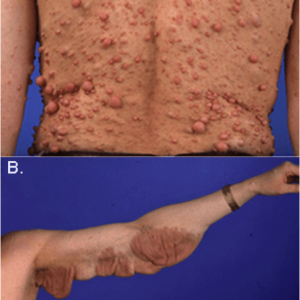
2 or more neurofibroma or single plexiform neurofibroma;
- glioma of the optic nerve;
- pigment spots in large quantities;
- thinning of the outer shell of tubular bones;
- is a small pigmentation that is similar to freckles and is located in the armpits and / or inguinal folds;
- disruption of the structure of the wing of the sphenoid bone;
- the presence of Recklinghausen's disease from one of the patient's relatives.
Diagnosis of neurofibromatosis Recklinghausen type 2 posits based on the presence of one of the following:
- unilateral neurinoma of the auditory nerve;
- plexiform neurofibroma;
- intracranial swelling;
- glioma and meningioma;
- spinal cord.
Treatment of Recklinghausen's disease
Despite the level of modern medicine, there are no radical ways to treat the disease in question.Patients with this diagnosis are given symptomatic therapy, which contains drugs that can normalize metabolic processes and reduce the rate of cell division.
As part of the medical treatment of Recklinghausen's disease, the following can be prescribed:
- Lidase;
- Ketotifen;
- Tigazon;
- Aevit;
- Fenkarol.
Similar methods help in most cases to stop the progression of the disease, and leads to a decrease in some neurofibromas.The above drugs are prescribed individually and only by a doctor.
If there are significant cosmetic defects or neoplasms located in a place of permanent trauma, then doctors can prescribe surgical treatment of Recklinghausen's neurofibromatosis.Also, this method of treatment is used when sharp morbidity of formations, ulcers of the neoplasm or when they squeeze vital organs.When excising one of the multiple nodes after surgery, progression of the tumor process may occur, which will be manifested by an increase in the size and number of neoplasms.If the patient has been treated with malignant tumors, radiotherapy or chemotherapy will be prescribed.
Hearing correction, which is disturbed by the central form of Recklinghausen's disease, is performed with the help of hearing aids, in some cases, patients undergo operations to excise the neuroma of the auditory nerve.But even with such treatment, hearing restoration will be possible only with the help of cochlear implantation.Recognizing the neurofibromatosis of Recklinghausen - a disease that progresses unevenly, can develop "jerks" - for example, there is often an active growth of tumors after a hormonal crisis in the body, or against the background of the trauma.In most cases, a favorable prognosis doctors give only those patients who have a peripheral form of the disease.In any case, the appearance of a large number of pigment spots is an occasion to visit a medical institution and undergo a complete examination.
Tsygankova Yana Aleksandrovna, medical reviewer, therapeutist of the highest qualification category

